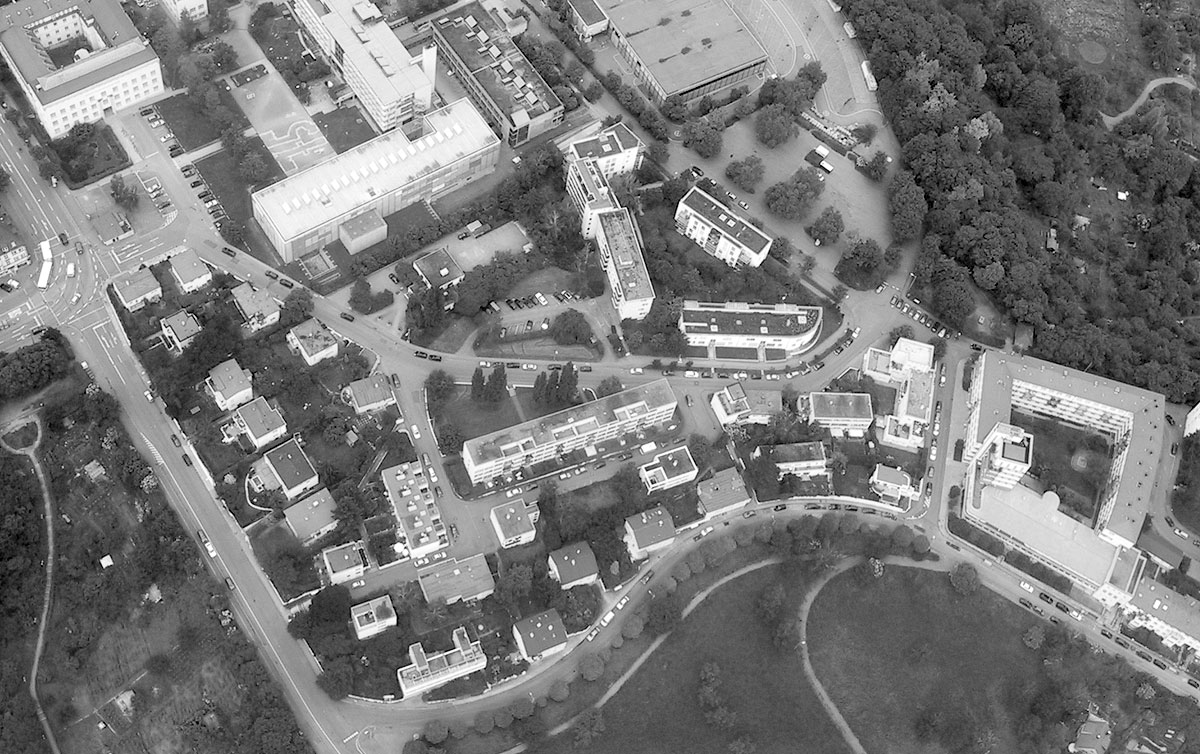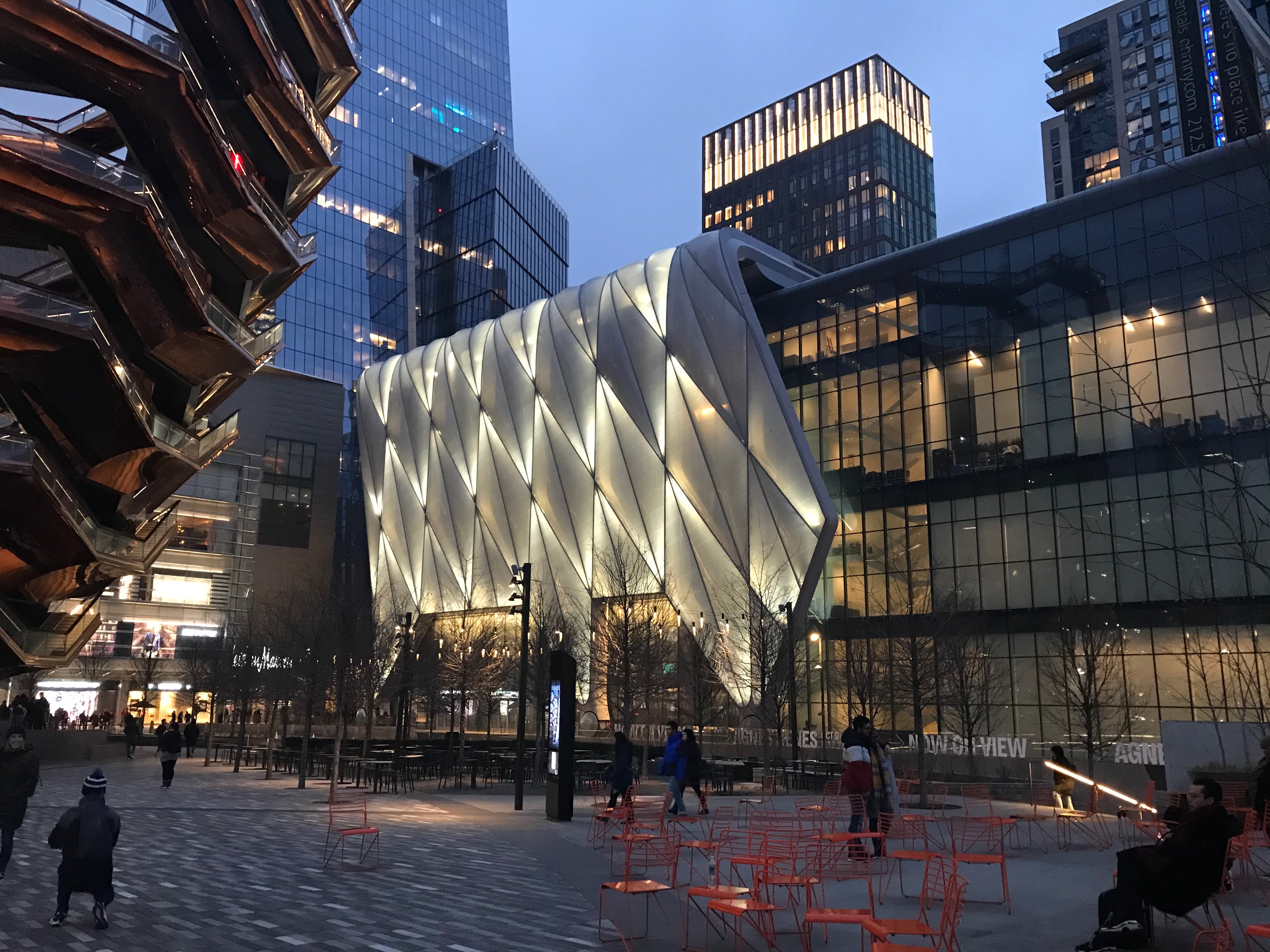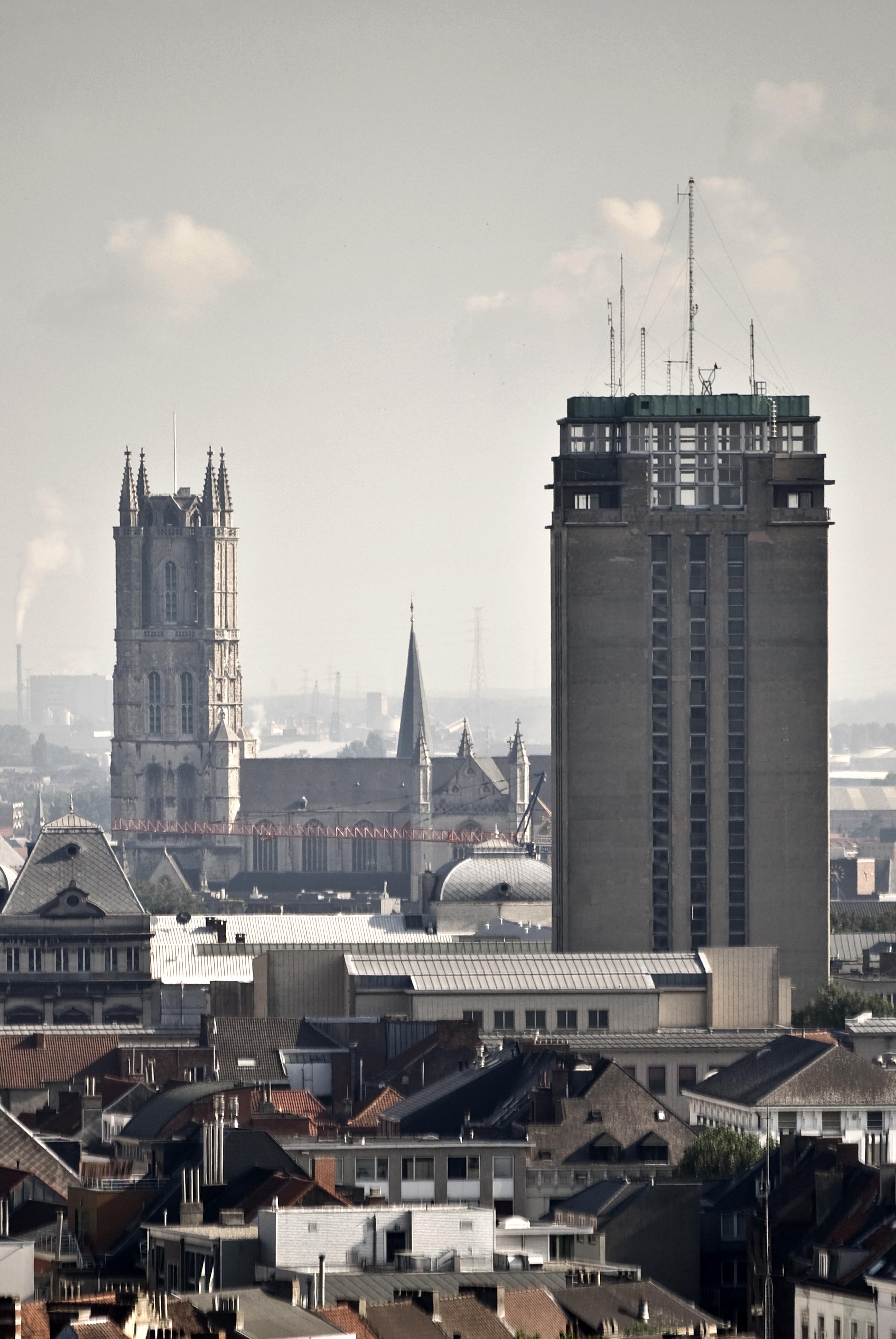|
Deutscher Werkbund
The Deutscher Werkbund (English: "German Association of Craftsmen"; ) is a German association of artists, architects, designers and industrialists established in 1907. The Werkbund became an important element in the development of modern architecture and industrial design, particularly in the later creation of the Bauhaus school of design. Its initial purpose was to establish a partnership of product manufacturers with design professionals to improve the competitiveness of German companies in global markets. The Werkbund was less an artistic movement than a state-sponsored effort to integrate traditional crafts and industrial mass production techniques, to put Germany on a competitive footing with England and the United States. Its motto ''Vom Sofakissen zum Städtebau'' (from sofa cushions to city-building) indicates its range of interest. History The Deutscher Werkbund emerged when the architect Joseph Maria Olbrich left Vienna for Darmstadt, Germany, in 1899, to form an ar ... [...More Info...] [...Related Items...] OR: [Wikipedia] [Google] [Baidu] |
Theodor Fischer
Theodor Fischer (28 May 1862 – 25 December 1938) was a German architect and teacher. Career Fischer planned public housing projects for the city of Munich beginning in 1893. He was the joint founder and first chairman of the Deutscher Werkbund (German work federation, 1907), as well as member of the German version of the Garden city movement. In 1909 Fischer accepted a position as professor for architecture at the Technical University of Munich. Notable pupils Famous pupils of Fischer include Paul Bonatz, Hugo Häring, Ernst May, Erich Mendelsohn, JJP Oud, Bruno Taut, German Bestelmeyer and Paul Schmitthenner. Style Originally an imitator of historical styles, he changed direction, seeking a style which was closer to German tradition; his rediscovery of the expressive qualities of stone influenced many of his pupils, and his search for a more genuinely volkisch style explains his nationalist utterances in the early part of the Third Reich. Fischer described his own st ... [...More Info...] [...Related Items...] OR: [Wikipedia] [Google] [Baidu] |
Weissenhof Estate
The Weissenhof Estate (German: Weißenhofsiedlung) is a housing estate built for the 1927 Deutscher Werkbund exhibition in Stuttgart, Germany. It was an international showcase of modern architecture's aspiration to provide cheap, simple, efficient, and good-quality housing. Two buildings designed by Le Corbusier were designated a World Heritage Site in 2016 as part of The Architectural Work of Le Corbusier, an Outstanding Contribution to the Modern Movement. The remainder of the Estate, and some adjacent streets and buildings, are a part of the Site's buffer zone. History and description The estate was built for the Deutscher Werkbund exhibition in 1927, and included twenty-one buildings comprising sixty dwellings, designed by seventeen European architects. The German architect Mies van der Rohe was in charge of the project on behalf of the city, and selected the architects, budgeted and coordinated their entries, prepared the site, and oversaw construction. Le Corbusier w ... [...More Info...] [...Related Items...] OR: [Wikipedia] [Google] [Baidu] |
Werkbund Exhibition - The Dwelling , held in Cologne, Germany
*
{{disambig ...
Werkbund, a German compound word denoting a productive or creative association, may refer to: * Deutscher Werkbund, a German association of artists, architects, designers, and industrialists, founded 1907 * Österreichischer Werkbund ( de), an Austrian association of artists, architects, industrialists and craftsmen, founded 1912 * Schweizerischer Werkbund ( de) (SWB), a Swiss association of artists and designers, founded 1913 See also * Werkbund Exhibition (1914) The first Werkbund Exhibition of 1914 was held at Rheinpark in Cologne, Germany. Bruno Taut's best-known building, the prismatic dome of the Glass Pavilion of which only black and white images survive today, was in reality a brightly colored la ... [...More Info...] [...Related Items...] OR: [Wikipedia] [Google] [Baidu] |
Lilly Reich
Lilly Reich (16 June 1885 – 14 December 1947) was a German designer of textiles, furniture, interiors, and exhibition spaces. She was a close collaborator with Ludwig Mies van der Rohe for more than ten years during the Weimar period in the 1920s and early 1930s. Reich was an important figure in the early Modern Movement in architecture and design. Her fame was posthumous, as the significance of her contribution to the work of Mies van der Rohe and others with whom she collaborated only became clear through the research of later historians of the field. Biography Reich was born in Berlin on 16 June 1885. In 1908, she put her embroidery training to use when she went to Vienna to work for the Wiener Werkstätte (Vienna Workshop) of Josef Hoffmann, a visual arts production company of designers, artists, and architects. She returned to Berlin by 1911. There she began to design furniture and clothing. She also worked as a shop window decorator at this time. The following year s ... [...More Info...] [...Related Items...] OR: [Wikipedia] [Google] [Baidu] |
Salon D'Automne
The Salon d'Automne (; en, Autumn Salon), or Société du Salon d'automne, is an art exhibition held annually in Paris, France. Since 2011, it is held on the Champs-Élysées, between the Grand Palais and the Petit Palais, in mid-October. The first Salon d'Automne was created in 1903 by Frantz Jourdain, with Hector Guimard, George Desvallières, Eugène Carrière, Félix Vallotton, Édouard Vuillard, Eugène Chigot and Maison Jansen.Salon d'automne; Société du Salon d'automne Catalogue des ouvrages de peinture, sculpture, dessin, gravure, architecture et art décoratif. Exposés au Petit Palais des Champs-Élysées, 1903 Perceived as a reaction against the conservative policies of the official Paris Salon ... [...More Info...] [...Related Items...] OR: [Wikipedia] [Google] [Baidu] |
Mies Van Der Rohe
Ludwig Mies van der Rohe ( ; ; born Maria Ludwig Michael Mies; March 27, 1886August 17, 1969) was a German-American architect. He was commonly referred to as Mies, his surname. Along with Alvar Aalto, Le Corbusier, Walter Gropius and Frank Lloyd Wright, he is regarded as one of the pioneers of modernist architecture. In the 1930s, Mies was the last director of the Bauhaus, a ground-breaking school of modernist art, design and architecture. After Nazism's rise to power, with its strong opposition to modernism (leading to the closing of the Bauhaus itself), Mies emigrated to the United States. He accepted the position to head the architecture school at what is today the Illinois Institute of Technology in Chicago. Mies sought to establish his own particular architectural style that could represent modern times just as Classical and Gothic did for their own eras. The style he created made a statement with its extreme clarity and simplicity. His mature buildings made use of modern ... [...More Info...] [...Related Items...] OR: [Wikipedia] [Google] [Baidu] |
Eliel Saarinen
Gottlieb Eliel Saarinen (, ; August 20, 1873 – July 1, 1950) was a Finnish-American Architecture, architect known for his work with art nouveau buildings in the early years of the 20th century. He was also the father of famed architect Eero Saarinen. Life and work in Finland Saarinen was educated in Helsinki at the Helsinki University of Technology. From 1896 to 1905 he worked as a partner with Herman Gesellius and Armas Lindgren at the firm Gesellius, Lindgren, Saarinen. His first major work with the firm, the Finnish pavilion at the Exposition Universelle (1900), Paris 1900 World Fair, exhibited an extraordinary convergence of stylistic influences: Finnish wooden architecture, the British Gothic Revival, and the Jugendstil. Saarinen's early manner was later christened the Finnish National Romantic Style, National Romanticism and culminated in the Helsinki Central railway station (designed 1904, constructed 1910–14). From 1910 to 1915 he worked on the extensive city- ... [...More Info...] [...Related Items...] OR: [Wikipedia] [Google] [Baidu] |
Cologne
Cologne ( ; german: Köln ; ksh, Kölle ) is the largest city of the German western States of Germany, state of North Rhine-Westphalia (NRW) and the List of cities in Germany by population, fourth-most populous city of Germany with 1.1 million inhabitants in the city proper and 3.6 million people in the Cologne Bonn Region, urban region. Centered on the left bank of the Rhine, left (west) bank of the Rhine, Cologne is about southeast of NRW's state capital Düsseldorf and northwest of Bonn, the former capital of West Germany. The city's medieval Catholic Cologne Cathedral (), the third-tallest church and tallest cathedral in the world, constructed to house the Shrine of the Three Kings, is a globally recognized landmark and one of the most visited sights and pilgrimage destinations in Europe. The cityscape is further shaped by the Twelve Romanesque churches of Cologne, and Cologne is famous for Eau de Cologne, that has been produced in the city since 1709, and "col ... [...More Info...] [...Related Items...] OR: [Wikipedia] [Google] [Baidu] |
Werkbund Exhibition (1914)
The first Werkbund Exhibition of 1914 was held at Rheinpark in Cologne, Germany. Bruno Taut's best-known building, the prismatic dome of the Glass Pavilion of which only black and white images survive today, was in reality a brightly colored landmark. Walter Gropius and Adolf Meyer designed a model factory for the exhibition. The Belgian architect Henri van de Velde designed a model theatre. Berlin-based Margarete Knuppelholz-Roeser designed the controversial Haus Der Frau. The exhibition happened mainly on the initiative of the later German chancellor Konrad Adenauer, then a 36-year-old aspiring inventor, Werkbund member and local politician at Cologne. The city spent the luxurious sum of 5 million Goldmarks (equivalent to million €) on the event. Planning began in earnest in 1912, and construction work started in early 1914. The exhibition was opened to the public by Van de Velde on 15 May 1914. Scheduled to last until the end of October, it was prematurely shut down on ... [...More Info...] [...Related Items...] OR: [Wikipedia] [Google] [Baidu] |
Theater (structure)
A theater, theatre or playhouse, is a structure where theatre, theatrical works, performing arts and musical Concert, concerts are presented. The theater building serves to define the performance and audience spaces. The facility usually is organized to provide support areas for performers, the technical crew and the audience members, as well as the stage where the performance takes place. There are as many types of theaters as there are types of performance. Theaters may be built specifically for a certain types of productions, they may serve for more general performance needs or they may be adapted or converted for use as a theater. They may range from open-air amphitheaters to ornate, cathedral-like structures to simple, undecorated rooms or black box theaters. A theatre used for opera performances is called an opera house. A theater is not required for performance (as in site-specific theatre, environmental theater or street theatre, street theater), this article is about s ... [...More Info...] [...Related Items...] OR: [Wikipedia] [Google] [Baidu] |
Henry Van De Velde
Henry Clemens van de Velde (; 3 April 1863 – 15 October 1957) was a Belgian painter, architect, interior designer, and art theorist. Together with Victor Horta and Paul Hankar, he is considered one of the founders of Art Nouveau in Belgium.'''' He worked in Paris with Samuel Bing, the founder of the first gallery of Art Nouveau in Paris. Van de Velde spent the most important part of his career in Germany and became a major figure in the German Jugendstil. He had a decisive influence on German architecture and design at the beginning of the 20th century. Early life Van de Velde was born in Antwerp, where he studied painting under Charles Verlat at the famous Royal Academy of Fine Arts, Antwerp. He then went on to study with the painter Carolus-Duran in Paris. As a young painter he was strongly influenced by Paul Signac and Georges Seurat and soon adopted a neo-impressionist style, and pointillism. In 1889 he became a member of the Brussels-based artist group "Les XX". After ... [...More Info...] [...Related Items...] OR: [Wikipedia] [Google] [Baidu] |








